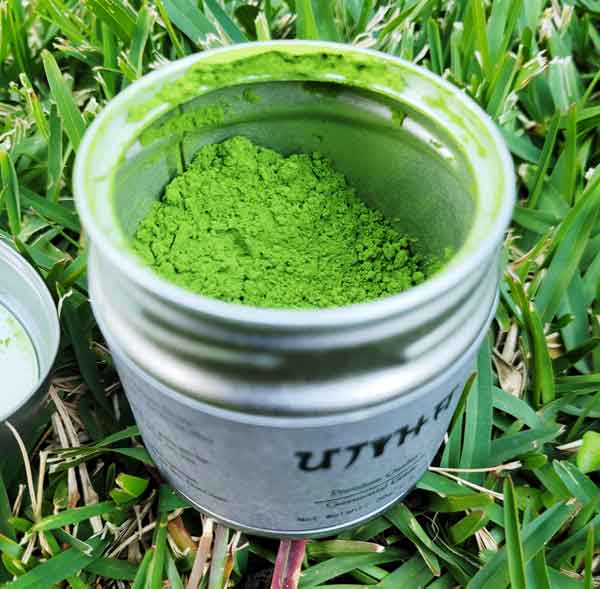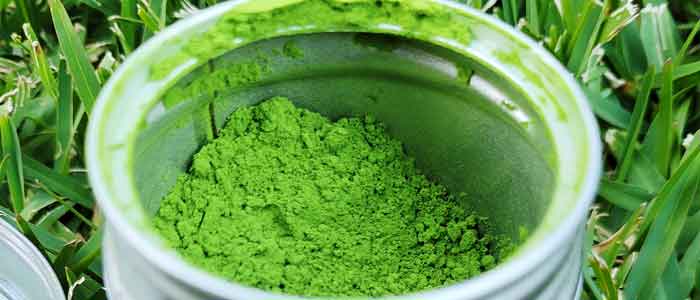I bet you’ve heard about matcha – that vibrant green tea that’s been creating quite a buzz in the tea world. But have you ever wondered what sets ceremonial grade matcha apart from the rest? If you’re nodding your head or you’re simply intrigued by the mystique that surrounds this traditional Japanese beverage, then you’re in for a treat! Embark on a flavor journey as we explore ‘What Does Ceremonial Grade Matcha Taste Like’.
Now, matcha is not just any tea—it’s the James Bond of teas! Grown and savored in Japan, it has a special place in Japanese culture. They’ve been loving this stuff for over a thousand years! But we’re not just talking about any ol’ matcha here. Oh no. We’re talking about the crème de la crème, the top-dog, the big cheese, the… well, you get it. We’re talking about ceremonial grade matcha.
Ceremonial grade matcha is like the VIP guest at the tea party. It’s the most prestigious of all the matcha grades (yes, there are grades, and no, it doesn’t have anything to do with school). This grade is reserved for those special moments when you want to experience matcha in all its glory.
Okay, enough chit-chat. What are we going to get into in this article? Well, hold on to your teacups because we’re diving deep into the unique taste of ceremonial grade matcha. We’ll talk about what makes it stand out, how it’s traditionally prepared, and how to really savor that top-tier taste. Plus, we’ll explore the health benefits that make this green powder not just a treat for your taste buds but a boon for your body too.
So, buckle up, and let’s get this tea party started!
Understanding Matcha Grades
You might think matcha is just matcha, right? Well, not so fast, my friend. Just like there are different kinds of wine (and believe me, there’s a world of difference between boxed wine and a bottle of Chateau Lafite), there are different grades of matcha too.
Differentiating between ceremonial grade and other grades
So, here’s the tea. You’ve got ceremonial grade matcha, and then you’ve got other types like culinary grade, premium grade, and so on. Let’s break it down a bit.
Ceremonial grade matcha is the Beyoncé of matcha grades—it’s flawless. It’s the highest quality you can find, and it’s traditionally used in Japanese tea ceremonies (hence the fancy title). It has a bright green color and a subtle, sweet taste that’s smooth as silk.
On the other hand, you’ve got culinary grade matcha. This is the stuff you’d normally find in lattes, smoothies, and baked goodies. It’s more robust and less sweet. Not quite Queen Bey, but it still hits the right notes.
And somewhere in the middle, you find premium grade matcha. Not as luxurious as the ceremonial, but not quite as hardworking as the culinary. It’s like the middle child—still great, but often overlooked.
Factors contributing to ceremonial grade matcha’s quality

Now, you may be wondering, what makes ceremonial grade matcha so special? Well, it’s a combo of several factors. First, it’s made from the youngest, most tender tea leaves. Picture the fresh, dew-kissed leaves in the early spring morning—that’s what we’re talking about.
Then there’s the production process. The leaves are stone-ground into a fine powder, which is like the Rolls Royce of grinding techniques. And let’s not forget about where it comes from. Our ceremonial grade matcha at UJIHA is sourced directly from Uji, Kagoshima, and Shizuoka. Like a true artisan cheese, the origins matter.
And finally, our matcha goes through a strict quality check—we’ve even got it tested for radiation and can provide a certificate of analysis and origin. It’s like a background check for your tea. Now, how many other teas can boast about that?
So yeah, that’s the lowdown on ceremonial grade matcha and what sets it apart. It’s not just tea, it’s a whole experience!
The Taste Adventure of Ceremonial Grade Matcha
Okay, time to get to the good stuff – the flavor! Fasten your seat belts, because the taste of ceremonial grade matcha is one wild ride.
Description of the taste
Initial taste (Umami, bitter)
As you take the first sip, you might be surprised. This isn’t like your standard black tea or a cup of joe. It’s a unique blend of umami and a hint of bitterness. Umami? Yeah, that’s a fancy term for a rich, savory taste. It’s like the bass guitarist in a band, adding depth and rhythm. As for the bitterness, think of it as a lead guitarist, taking the stage with a killer solo.
Subsequent tastes (Sweet aftertaste)
Now, just when you think you’ve got this flavor profile figured out, here comes the sweet aftertaste, like the perfect encore to a great concert. The bitterness gracefully bows out, making way for a sweet finish that leaves you craving for more. This is when you realize, this isn’t just a drink, it’s a symphony in a cup.
How the taste evolves over time
The great thing about ceremonial grade matcha is that the taste evolves like a well-told story. It starts off bold, keeps you intrigued, and ends on a high note. As the matcha cools down a bit, you’ll start to notice even more nuances in the flavor. You might pick up hints of grass, or a creamy note, or even a whisper of nuttiness. It’s like each sip is a new chapter in a captivating novel.
Comparison with the taste of other matcha grades
If we compare this to other grades of matcha, they’re more like short stories. Culinary grade matcha tends to be bolder and more straightforward in taste – it’s the action movie of matcha, with lots of excitement but not as much character development. Premium grade matcha, while still having a complex taste, might not have that grand finale of sweet aftertaste.
So there you have it. The taste adventure of ceremonial grade matcha is like a best-selling novel, with complex characters, a riveting plot, and a satisfying ending. So, are you ready for the next chapter?
How Ceremonial Grade Matcha is Traditionally Prepared and Served
Let’s step into our time machine and head back to ancient Japan, where the tradition of preparing and serving matcha started. It’s not just about throwing some leaves into hot water. Oh no, it’s a whole ritual.
The traditional process of preparing ceremonial matcha
Imagine you’re in a peaceful Japanese tea house. The first thing you’ll notice is the matcha itself – it’s a vivid green powder, not leaves. It’s so fine it could give powdered sugar a run for its money!
Preparing ceremonial grade matcha is like a well-choreographed dance. First, you sift the matcha powder into a bowl to break up any lumps and make it even smoother. Then you add hot water – not boiling, mind you, but hot. About 80°C or 175°F if you’re into numbers.
Now, here’s where the magic happens. You take a bamboo whisk (known as a “chasen”) and whisk it up until it’s frothy. It’s not just a casual stir – you’ve got to use your wrist and get a good rhythm going. Picture yourself as a drummer in a rock band, but instead of drumsticks, you’re holding a bamboo whisk and your drum is a bowl of matcha.
The influence of the preparation process on taste
Now, you might be wondering, does all this effort make a difference in taste? Absolutely! Whisking it just right introduces air into the matcha, making it a frothy, creamy delight. It’s like the difference between a flat soda and a nice, fizzy one.
And the water temperature plays a big part too. Too hot and it can bring out too much bitterness, too cold and it won’t extract the full flavor. That’s why we aim for the “Goldilocks zone” of hot water.
So, the next time you’re savoring a bowl of ceremonial grade matcha, take a moment to appreciate the art and tradition that goes into preparing it. It’s not just about the destination (although it’s a delicious one!), it’s about the journey too. And let’s be honest, isn’t everything better when it’s a little bit theatrical?
How to Fully Appreciate the Taste of Ceremonial Grade Matcha
Alright, we’ve chatted about what makes ceremonial grade matcha special, how it tastes, and how it’s prepared. Now, let’s talk about how you can make the most of your matcha experience. After all, it’s not just about drinking it; it’s about appreciating it.
Best practices for tasting matcha
First off, remember that your mouth is the stage, and matcha is the performer. You want to make sure the stage is clean and ready. In other words, rinse your mouth with some plain water to get rid of any lingering tastes before your first sip. It’s like clearing the crowd before the star takes the stage.
Now, we’ve talked about how temperature is important when preparing matcha, but it’s just as important when drinking it. Let your matcha cool just a tad before you take the first sip. You want it warm, but not hot. It’s like Goldilocks, but with tea instead of porridge.
Finally, don’t just gulp it down. Take your time, take small sips, let the matcha roll over your tongue, and savor the flavors. It’s not a race; it’s a leisurely stroll through a flavor garden.
Suggestions for pairings to enhance the taste experience
Now, if you really want to kick your matcha experience up a notch, try pairing it with some food. You know how wine and cheese are a match made in heaven? Well, matcha has its soulmates too.
Traditionally, matcha is served with small Japanese sweets called “wagashi”. They’re often sweet and can balance out the slight bitterness in matcha. But if you can’t find wagashi at your local grocery store, no worries. A simple biscuit or a piece of dark chocolate could work too. The sweetness of these treats contrast and thus bring out the umami and subtle sweetness of the matcha.
So, there you have it, your guide to fully appreciating the wonder that is ceremonial grade matcha. Now, go forth and savor, my friends. A world of flavor awaits!
Health Benefits of Ceremonial Grade Matcha
Not to brag, but ceremonial grade matcha is not just a delight for the taste buds—it’s a jackpot for your health too. It’s like a superhero in a cup!
Overview of the health benefits
First off, matcha is a great source of antioxidants, specifically a type called catechins. Think of them as the bodyguards for your cells, fighting off harmful free radicals. It’s like having a personal security team, but for your body.
Now, let’s talk about a specific catechin called EGCG (that’s short for epigallocatechin gallate, but let’s stick with EGCG for the sake of our tongues). EGCG is like the superstar of the antioxidant world. Studies suggest it can help with all sorts of things like boosting metabolism and heart health.
[Source: Beneficial Properties of Green Tea Catechins]
And then there’s the calming effect of matcha. It contains an amino acid called L-theanine which promotes relaxation without drowsiness. It’s like yoga in a cup!
[Source: L-Theanine: properties, synthesis and isolation from tea]
How the quality (and therefore the health benefits) of ceremonial grade surpasses other grades
Now, you might be wondering, does the grade of matcha affect these health benefits? Well, remember how we talked about ceremonial grade matcha being made from the youngest, tender tea leaves? Those young leaves are packed with more of those beneficial compounds. It’s like the difference between a fresh, ripe fruit and a canned one – both are good, but one’s got a bit more oomph!
And don’t forget, our ceremonial grade matcha at UJIHA is tested for radiation, ensuring not only the best flavor but the safest, most beneficial cup of tea possible.
So, next time you’re savoring a cup of ceremonial grade matcha, give yourself a pat on the back. Not only are you treating your taste buds, but you’re also doing something great for your health. It’s a win-win situation!
Want to delve deeper into the health benefits of ceremonial grade matcha? Click here to unlock the secrets of this vibrant green powerhouse and start your journey towards superior wellness with UJIHA’s premium ceremonial grade matcha!
Conclusion
Alright, we’ve been on quite the journey together, haven’t we? We’ve explored the complex world of ceremonial grade matcha, from its meticulous preparation to its unique taste profile, and even its health benefits. But what does all this boil down to?
Let’s sum it up: ceremonial grade matcha isn’t just a drink—it’s a flavor adventure. It offers a delicate balance of umami, a hint of bitterness, and a surprising sweet aftertaste that unfolds beautifully over time. It’s like a riveting book you can’t put down or a song that you play on repeat.
Now, it’s your turn to embark on this taste journey. Whether you’re a seasoned matcha lover or a curious newbie, ceremonial grade matcha offers a unique experience that’s worth exploring. And remember, this isn’t a rush-hour commute; it’s a leisurely road trip. Take your time, savor each sip, and let the intricate flavors of ceremonial grade matcha take you on a ride.
So go on, whip out that bamboo whisk, heat up some water, and let the magic of ceremonial grade matcha envelop you. Trust me, your taste buds will thank you!


